Peter I Alekseyevich
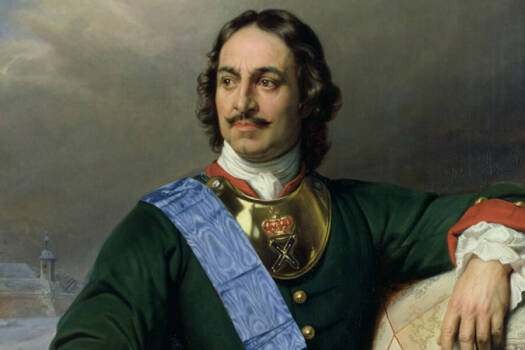
The vicissitudes of fate of Peter I (1672–1725), the last Russian Tsar and the first Emperor of All-Russia, have occupied the minds of researchers, politicians and writers for three centuries so far. The great reformer reshaped the Russian society, dividing the history of the country into the "Petrine" and "pre-Petrine" epochs; some of his innovations are still alive today. All the actions of Peter I in domestic and foreign policy in one way or another came down to one thing: the Emperor sought to increase the military and technical power of the country, "to cut open a window to Europe" and to borrow the best achievements of European civilization.

Childhood and Youth of Peter I
Peter I was born on May 30 (June 9), 1672. Peter was the eldest son of Tsar Alexei Mikhailovich from his second wife, Natalia Kirillovna Naryshkina. The heir to the throne was brought up by babysitters and taught literacy by dyak Nikita Zotov who wasn't educated enough. Peter I did not receive a formal European education, mastered literacy late for his age and wrote with mistakes. However, the young Tsarevich always showed a thirst for knowledge and looked forward to learning new things for all his lifetime. He enjoyed mastering crafts and spoke several foreign languages.

The Tsarevich showed a craving for military science from early childhood. The soon-to-be Emperor had a "poteshny" regiment manned by his peers to simulate battles. Peter and his companions staged battles, stormed fortresses and even created artillery for his regiment. Gradually the "game of soldiers" turned into real military training where there were more and more adults. The childish poteshny regiment of the Tsarevich became soon the well-known Petrine army of a new formation with elite guard units — Preobrazhensky and Semyonovsky regiments.
The Reign of Peter I
The path of the eventual Emperor to power was not easy. The first years of the reign of Peter I were overshadowed by the intrigues of the belligerent boyar families, bloody revolts of Streltsy and the struggle with the elder sister, Tsarevna Sophia. The Emperor was implementing radical reforms alongside the raging exhausting Great Northern War. The victory did not make the monarch rest on his laurels for a long time — the tireless potentate, the "eternal worker" on the throne, worked for the grandeur and glory of the empire for the rest of his days.
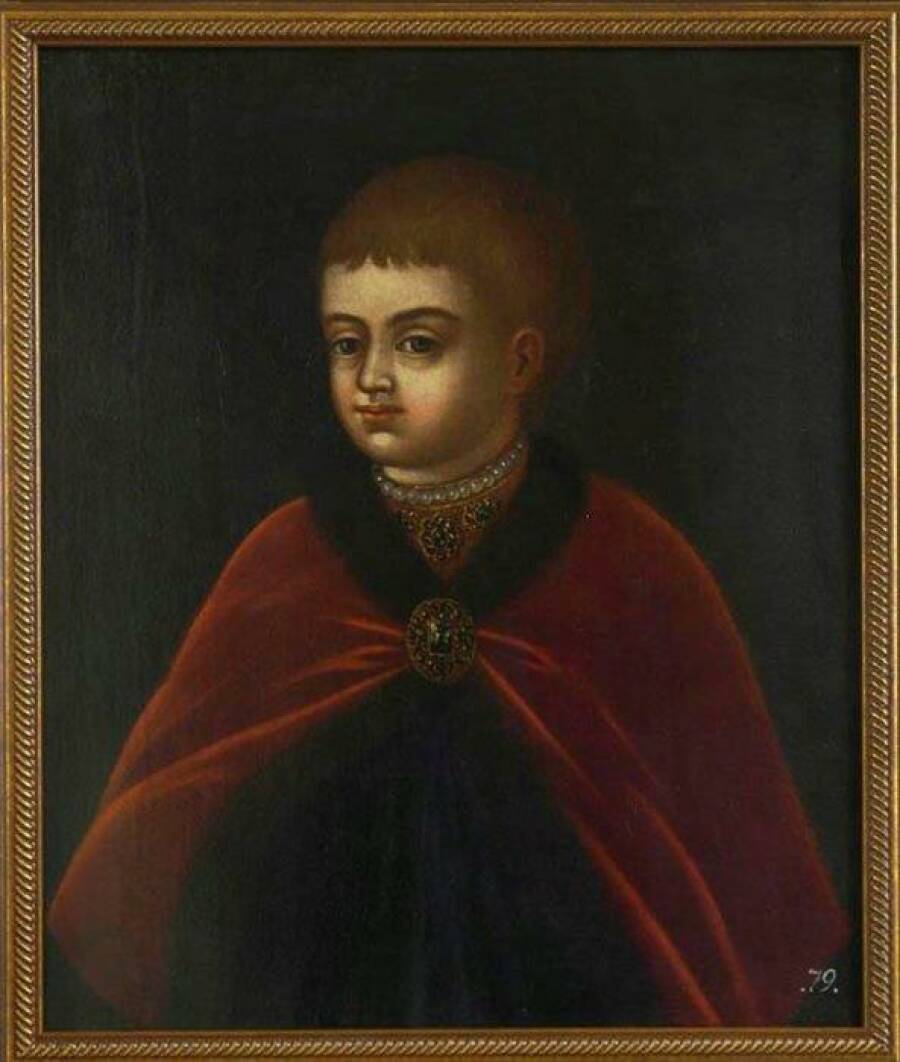
The Reign of Peter I. Early Years
Tsar Fyodor Alekseyevich, Peter's elder brother, ruled not for long. He died in 1682, leaving open the question of succession to the throne. The fierce wrestling of two boyar families, Naryshkin and Miloslavsky, swept the Empire. From Miloslavsky family, there was a brother of Peter, Ivan, who was supposed to occupy the throne by seniority. However, the Boyar Duma decided to crown the healthy and intelligent Tsarevich Peter as the Tsar, instead of Ivan who was a feeble person and scarcely capable of governing the Tsardom.
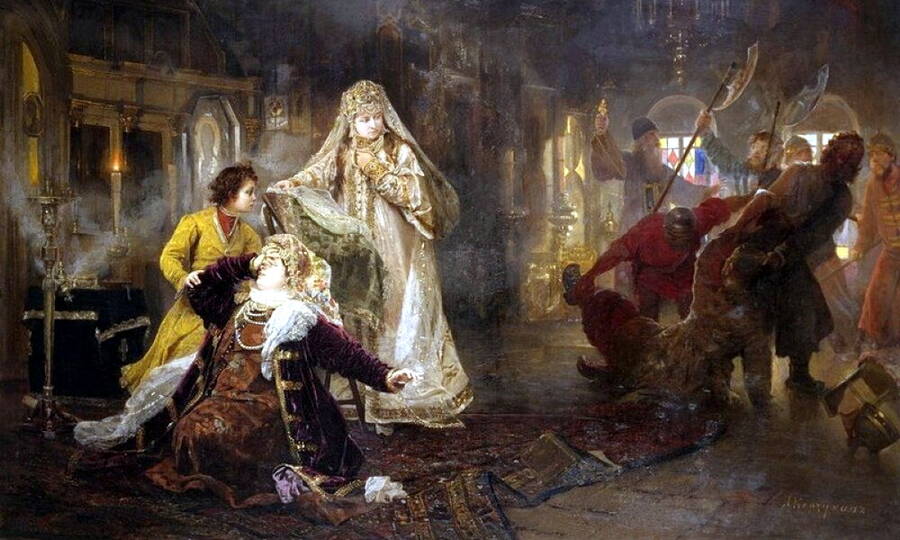
In an attempt to retain power, the Miloslavsky spread the rumour that Tsarevich Ivan had been killed by the Naryshkin. A bloody Streltsy uprising broke out. On May 15 (25), 1682, an angry mob of armed men broke into the Kremlin. Although Ivan appeared before the Streltsy alive and unscathed, the uprising continued until many boyars were killed. As a result, the throne was divided by both contenders for the throne. Ivan V was appointed as "the first" Tsar, and Peter I — as "the second" Tsar. Tsarevna Sophia Alekseyevna became the regent for them; in fact, she was the head of the state.
The reign of Tsarevna Sophia lasted until 1689. Peter grew up and got married, which meant that he officially broke free of the guardianship of his sister, and began to show his own domination. There was also a military force behind him, i.e. those poteshny regiments loyal to the Tsar ceased to be the toy army long ago. Tsar Ivan did not take any part in state affairs. After his death on January 29 (February 8), 1696, the power officially passed into the hands of Peter.
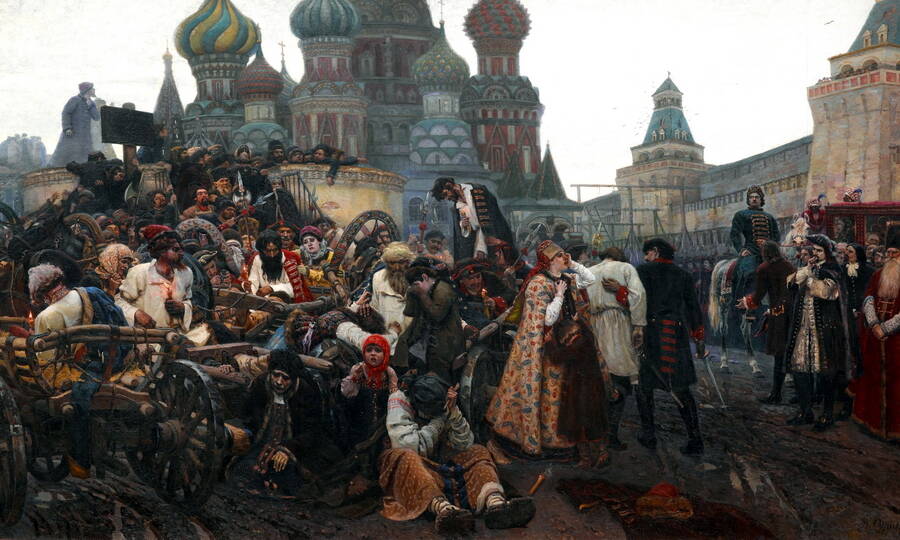
The last attempt by Sophia and her confidants to return to state rule was in 1698 when another Streltsy uprising broke out in Moscow while Tsar Peter was abroad. The uprising was brutally suppressed. Mass executions of the Streltsy went down in history as one of the bloodiest pages of Peter's reign.
The Beginning of Russia's Expansion, 1690–1699.
In the 90s of the 17th century, the foreign policy of Peter I was oriented toward the South. Under the rule of Princess Sophia, Russia joined the war against the Ottoman Empire, and the young Tsar's task was not to lose it. Peter I the Great handled this task brilliantly — the Constantinople Peace Treaty of 1700 strengthened Russia's position in the South, and the ruler shifted attention to the North-Western borders of the state.
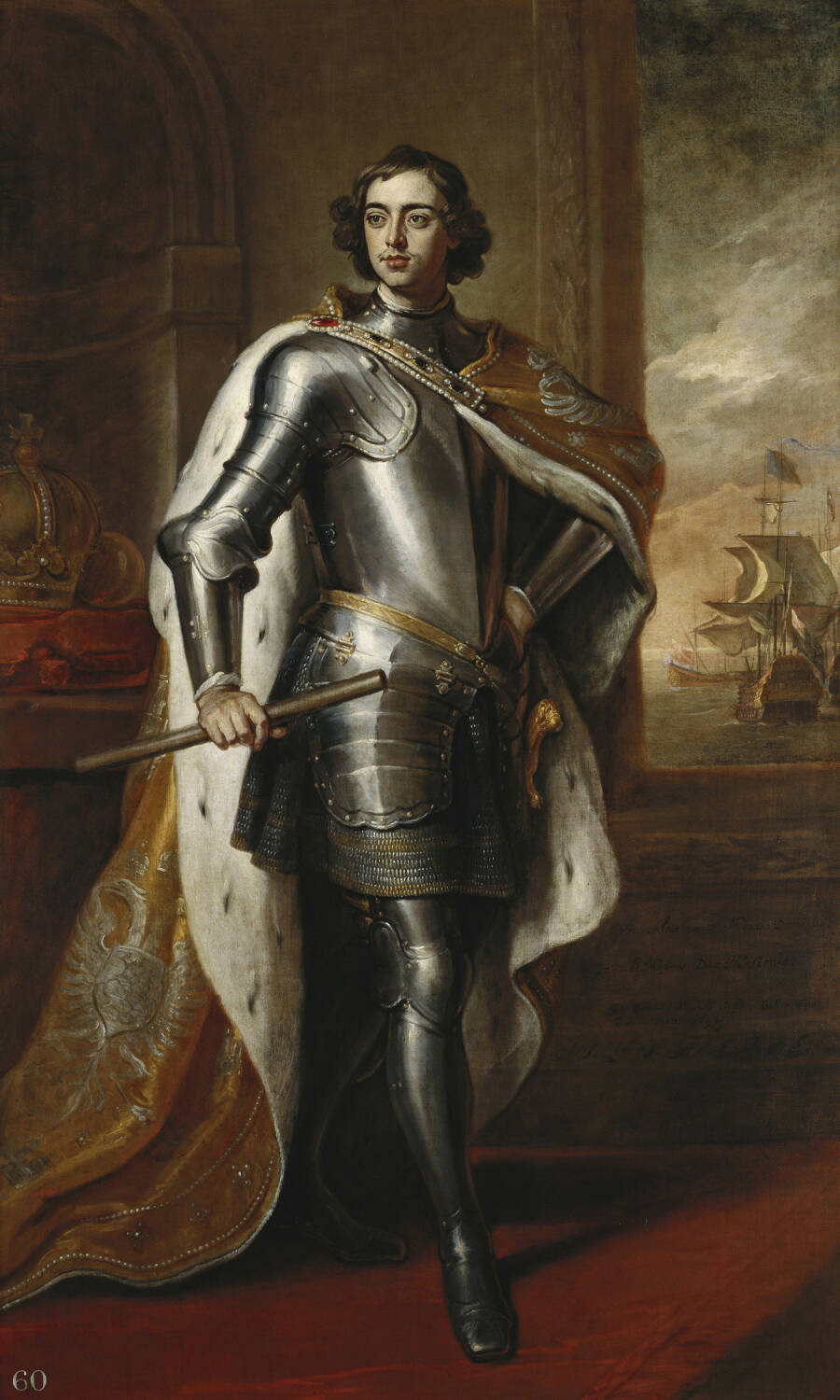
In the spring of 1697, the famous Grand Embassy went to the Western Europe countries. It had to solve many tasks: to gain the support of the European rulers in the fight against Turkey and Sweden; to study military and engineering practices, and the political system of the European powers; to invite foreigners to the Russian service; to buy weapons and other goods which the homeland hadn't manufactured.
The Embassy visited Austria, Holland and England. The Embassy had planned to visit Venice and even the Pope but the Streltsy uprising interrupted the Tsar's journey. Peter I was an incognito member of the Embassy under the name of the uryadnik (junior officer) of the Peter Mikhailov's Preobrazhensky regiment but the striking appearance and personal interference with the negotiations made the Tsar's disguise useless.
The Grand Embassy of Peter I to Europe. Portrait of Peter. Engraving.
In the journey, Peter I actively studied Western technologies. In the Dutch town of Saardam and later in English Deptford, the Tsar learned the science of shipbuilding and worked in shipyards. He visited hospitals, factories, museums, and universities, took an interest in various crafts — from engraving techniques to methods of embalming corpses. The Grand Embassy is believed to become the catalyst for the Europeanization of Russia during the reign of Peter I.
Creation of the Russian Empire, 1700–1724.
The process of modernization and Europeanization of Russia took place against the background of exhausting and long wars. In search of money, soldiers and labour, Peter had to mobilize all resources of the state, resorting to merciless repression. But by the end of Peter's reign, Russia had entered the European arena as a powerful military and industrial power, and Peter took the title of Emperor of All-Russia and Father of the Homeland on October 22 (November 2), 1721.
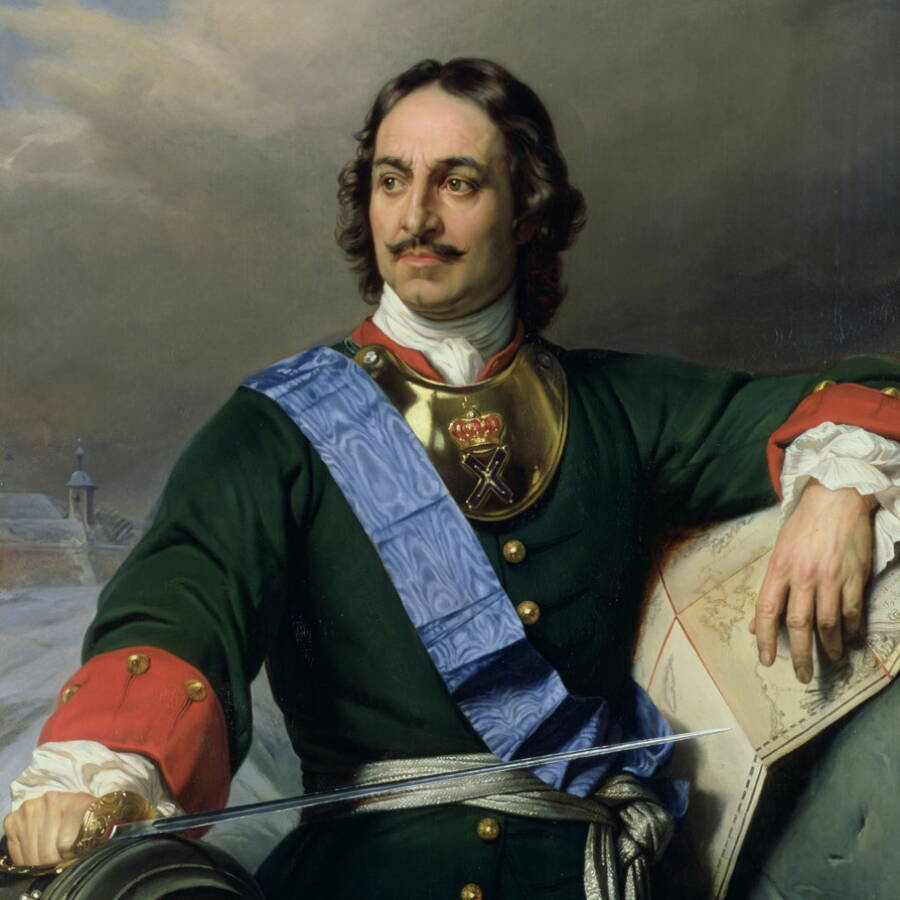
Foreign Policy
The long confrontation with the Ottoman Empire in the South, the exhausting Northern War with Sweden, and advance to the East were the main directions of the great reformer's foreign policy. However, the foreign policy was implemented not with weapons alone. The success of Peter's diplomacy resulted from the close ties established with foreign governments spurred by visits to Europe and personal acquaintances of Peter with the monarchs of the major powers.
Military Campaigns
The biography of Peter the Great is in many ways a record of the wars that Russia waged during his reign. The brave Tsar was never in the rear of his army. In the hottest battles, in the thick of events, under bullets, he risked his life and inspired soldiers and officers with his heroism.
Azov Campaigns
As soon as Peter gained real, not nominal, power in the Russian state, the war with the Ottoman Empire required all his efforts.
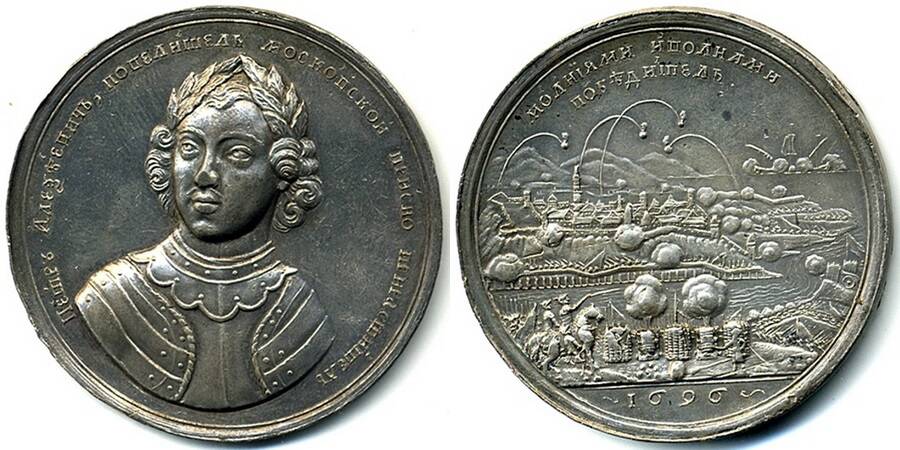
The main goal of the Russian army was the capture of Azov fortress, which gave Russia access to the sea. The first Azov campaign of 1695 ended in failure. The young Tsar realized that it would not be possible to seize the fortress without the support of warships, and launched the construction of ships at the shipyards of Voronezh. The money for the fleet was collected all together: the ruler ordered to organize "kumpanstvo" (sort of a company) which united owners of peasants. Each kumpanstvo had to build and equip a ship.
A year later, in the second campaign, Russia used not only land troops but also Marine Regiment, a prototype of the modern marine infantry. Azov was captured.
Great Northern War
By the beginning of the 18th century, the foreign policy of Peter had begun to turn to Europe — the Tsar decided to return the lands on the Baltic. Russia could not fight alone and on two fronts, so the Northern War began only after a truce had been concluded with the Ottoman Empire and after the "Northern Alliance" had been formed, i.e. the anti-Swedish coalition of Russia, Denmark, Saxony and the Polish-Lithuanian Commonwealth. The beginning of the Northern War proved difficult for the country. Catastrophic Russia's backlog in the military, industrial and economic spheres became obvious after the defeat of the Russian troops at Narva on November 19 (30), 1700.
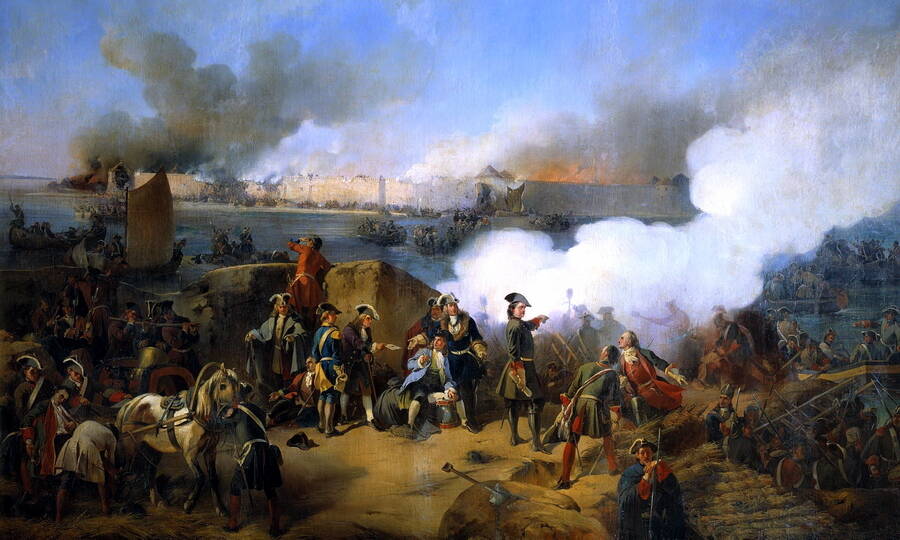
Peter I completely reorganized the management structure of the army, changed the supply system, put the industry in the service of the army, built shipyards and the fleet. The result was not long in coming: two or three years later, the Russians reached the coast of the Baltic Sea in the Neva delta, seized the fortresses of Noteburg and Nyenschantz and started the construction of St. Petersburg. By 1704, Peter had conquered Narva and Dorpat; and on June 27 (July 8), 1709 he defeated the Swedish King Charles XII in the Poltava Battle. Among the largest victories of the young Russian fleet were the battles of Gangut in 1714 and Grengam in 1720.
The peace treaty with Sweden was signed on 30 August (10 September), 1721, in Nystad. Russia had secured extensive Baltic territories (Ingria, Karelia, Lifland and Estland) and gotten access to the sea.

Russo-Turkish War of 1710–1713
In 1710, the sultan declared war on Russia, and Peter had to fight on two fronts. The Sovereign led his troops towards the Danube, where he hoped to gain the support of Christians under Turkey's control. This campaign of 1711 was abysmal for Russia. The army was surrounded by the Prut River. Soldiers were suffering severely from hunger and thirst. The Tsar and his entourage could have been captured, and they had to sue for peace from the Turks.
The Prut Peace Treaty with the Ottoman Empire and the subsequent Peace of Adrianople (Edirne) concluded in 1713 allowed Peter to continue his fight with Sweden, nevertheless, he lost all previously conquered lands in the South. Azov was returned to Turkey, Taganrog was destroyed, Russia lost the Azov fleet and access to the sea. However, these conditions were much milder than that Peter was ready to agree with while desperately tossing about in the Prut trap.
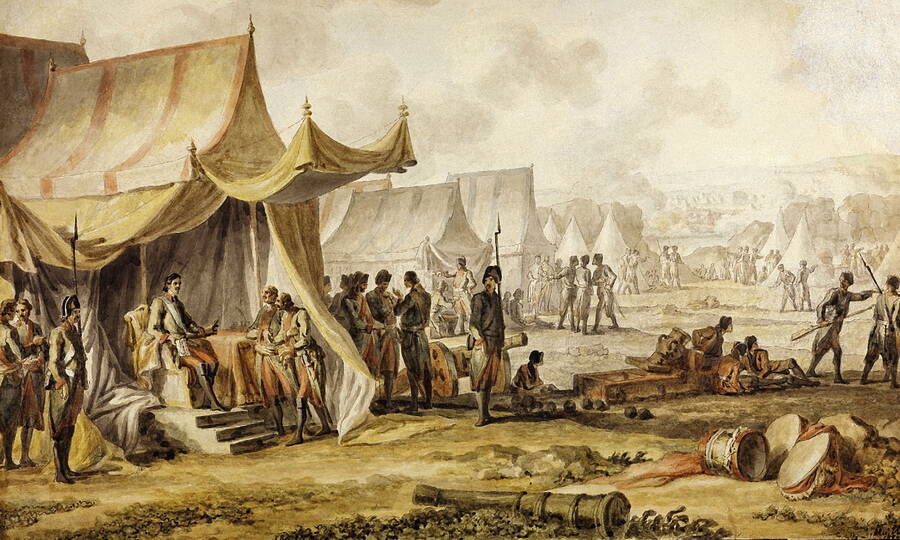
Eastward Expansion
Despite the ongoing wars in the European part of Russia, Peter the Great continued the development of eastern lands — Siberia, Central Asia, and the Far East. Ivan Dmitrievich Buchholz, an associate of Peter I, went on an expedition to Siberia in 1714 and founded the Omsk Fortress to the south of Irtysh. In 1716–1717, Prince Alexander Bekovich-Cherkassky was sent to the Khanate of Khiva with a large detachment. He had to persuade the Khiva Khan to switch his allegiance to Russia, explore gold mining opportunities at the Amu Darya River, and even pave the way to India. Bekovich's campaign ended in failure: all his soldiers perished or were captured, and the commander himself was killed.
Active development of the Far East, including Kamchatka, continued under Peter the Great. Since 1708, the peninsula has been part of the Yakut uyezd (district) of the Siberian Province. The expeditions of Vitus Bering to America across the Pacific Ocean were organized at the behest of the Emperor, though after his death.
Caspian (Persian) Campaign
In 1722–1723, under Emperor Peter I, Russia entered into a new war — with Persia. The Persian (Caspian) Campaign was aimed at acquiring the territories of the southeastern Caucasus and Dagestan. In 1722, Derbent surrendered to the Russian army and navy, and in 1723, the western shore of the Caspian Sea, including the fortress of Baku, surrendered. The Ottoman intervention halted further conquests, and a few years after the death of Peter the Great, the Caspian lands returned to Persia.
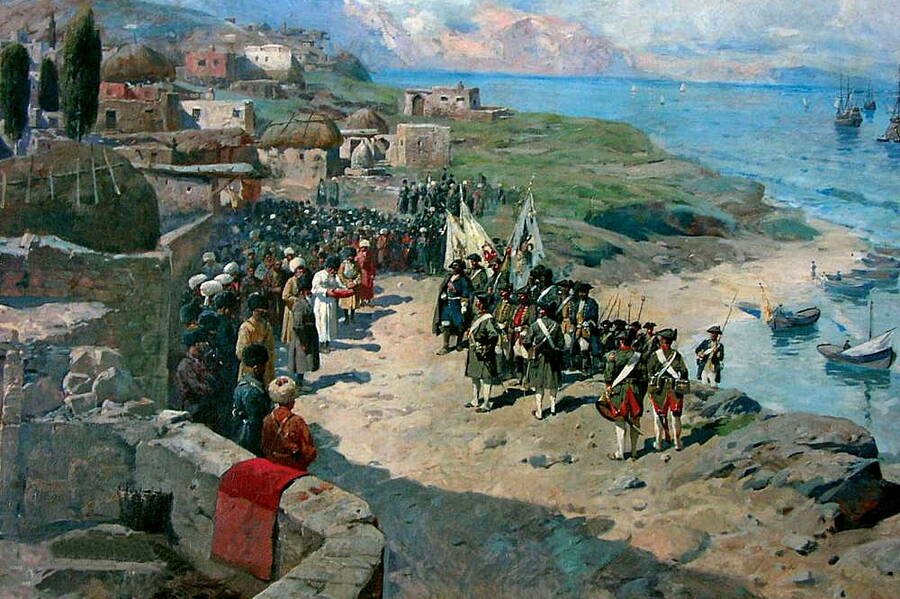
Reforms of Peter I
The radical transformations of Peter's time affected all areas of Russian reality. The main ones were military, administrative, financial, and church reforms.
Military Reforms
The dissolution of the Streltsy troops and the creation of the "new order" army, that is, a regular army organized along European lines, were the first stage of large-scale military reforms. Over a couple of decades, Peter the Great built a fleet and the entire infrastructure, including shipyards, admiralty offices, logging companies, "from scratch" or, at times, with his own hands (it is worth remembering his studies at the shipyards of Saardam and Deptford).
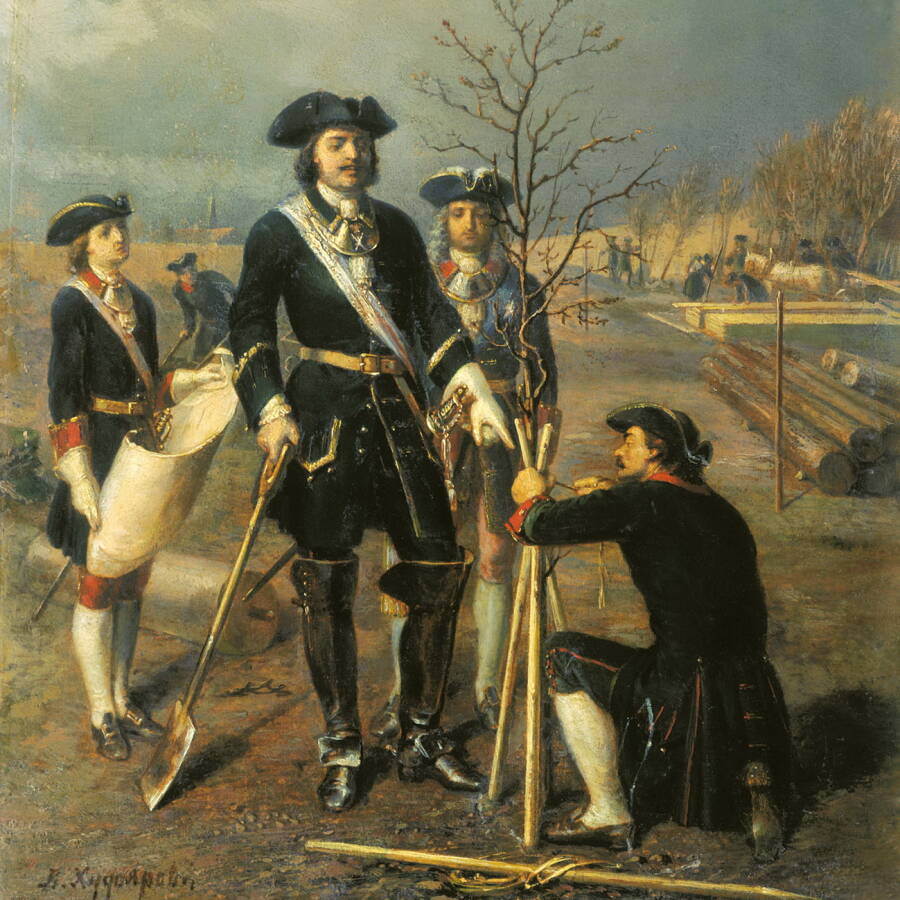
Gradually, the majority of foreigners in military service were replaced by well-trained Russian officers. The army staffing model had also changed. In 1705, Peter I introduced a conscription duty obligatory for all social estates. It was a personal service obligation for nobles, and a communal obligation for taxpaying estates. Recruits left their home forever: under Peter I, it was a lifelong service.
Public Administration Reforms
Peter the Great did not have a clear plan for public administration reforms. The monarch sought to reduce the influence of the Boyar Duma and to establish an effective administrative vertical. In 1711, Peter created the Governing Senate, the supreme collegial governance body established to run the country "in place of His Majesty, the Tsar's own person" while the restless Russian Tsar was absent. Gradually, the Senate acquired legislative, administrative and judicial functions.
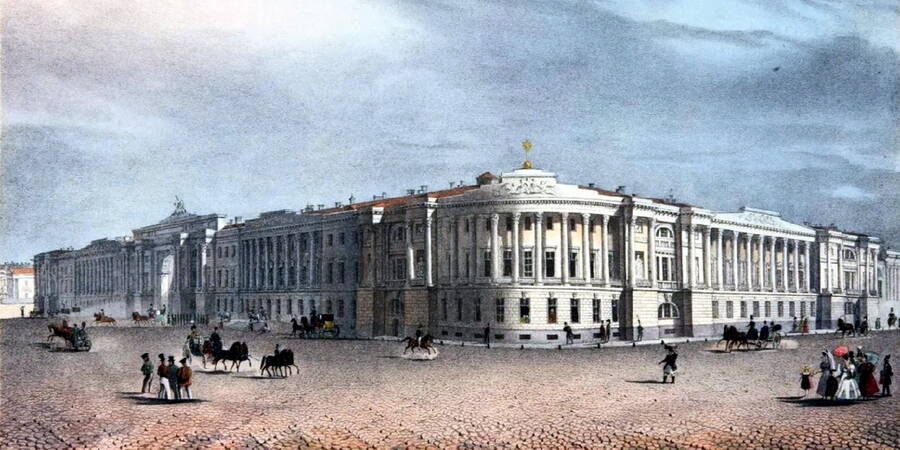
By the beginning of the 18th century, the entangled system of prikazy (administrative offices) was completely obsolete, and Peter gradually got rid of it. The new governing bodies called collegia had to clearly distribute the functions of the former agencies among themselves, make the administrative system transparent and speed up its work. The number of collegia varied, the main ones were the Military Collegium, Admiralty Collegium and Collegium of Foreign Affairs. The Public Prosecutor's Office and the Fiscal Institute were established under Peter the Great to control the activities of the expanded bureaucratic machine.
Church Reform
Peter the Great wanted to subordinate all spheres of life to the needs of the state, and therefore could not accept the independence of the church. He abolished the patriarchate and conciliarity of the church and turned its governing body into one of the collegia — the Holy Governing Synod (1721). Thus, the church was fully integrated into the power hierarchy with the autocratic Tsar at the head.
Monetary Reform
The search for funds for warfare was the focus of Peter’s attention all the time. In the early years of his reign, the treasury was almost emptied, and the Tsar invented more and more new ways to replenish it: direct and indirect taxes, mandatory use of stamped paper, and reduced coin weight. Under Peter, the main monetary unit was changed from denga to kopeck.
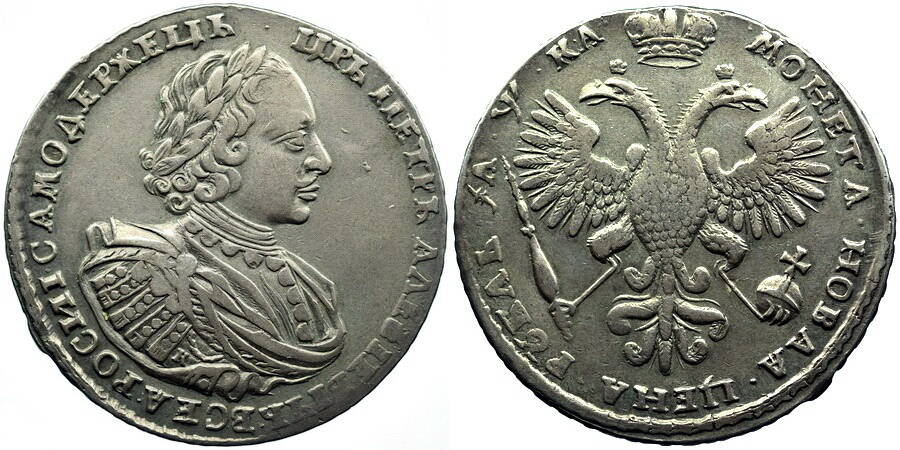
The transition to the new per capita taxation method (previously — per household) caused a major restructuring of the country's financial system. This required the arrangement of regular censuses since the amount required for maintenance of the army, navy, and administration was no longer divided by the number of peasant households, but by the number of males. Despite the shortcomings and inaccurate censuses, this reform has at least doubled the size of the treasury.
Industrial and Commercial Transformation
The development of the country's industry and mining sectors was one of the important tasks of the reforming Tsar. Geological exploration of mineral resources and the establishment of factories were undertaken throughout Russia by Peter's orders. A powerful metallurgical base was created in the Urals. Those wishing to develop mineral resources were granted various privileges. New private and state-owned factories were established.
The war with Sweden forced Peter to abandon the purchase of metal abroad. At the beginning of the war, church bells were melted into cannons. By the end of the reign of Peter the Great, Russia ceased to depend on imports of metal and began to export it to Europe. The Tula and Sestroretsk arms factories supplied rifles, cannons and cold steel to the entire army, thus helping the treasury to eliminate foreign procurement costs. Light industry, primarily leather goods and textiles sector, had been developing as well. Peter supported domestic merchants and industrialists by setting different fees for Russian and foreign merchants. However, there were no restrictions on the import of goods that were not available in Russia.
Class Policy
Peter's aspiration to regulate the state life affected the structure of society: the rights and duties of various estates were established under his rule, the peasantry was even more enserfed than before, a new form of peasant dependence appeared — attachment to manufactories.
At the same time, the boundaries between estates became elastic under Peter. The introduction of the Table of Ranks enabled upward social mobility: from now on, a high status in society could be obtained not by birth, but by work and merit. The Table of Ranks divided all ranks of military, civilian and court service into 14 classes. Any servant or officer could obtain personal nobility upon reaching the 8th class. The privileges of the old patrimonial boyardom have thereby been virtually eradicated.
Education Reform
Undoubtedly, the reforming Tsar Peter the Great was an enlightener as well. He sent young people to study abroad, invited European professors and technical specialists to Russia, and opened educational institutions for the training of military and naval personnel, engineers, and doctors. From 1701 to 1721, the School of Mathematical and Navigational Sciences, the Artillery, Medical, Engineering Schools and the Maritime Academy began their work in Russia.
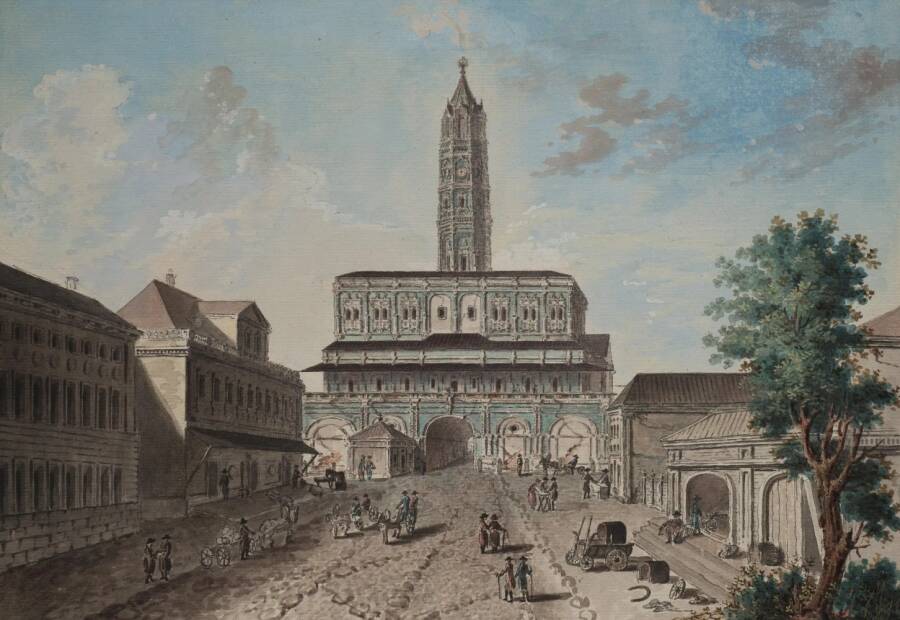
The tower, built in Moscow in 1692-1695, housed the School of Mathematical and Navigational Sciences.
Peter did not forget about mass education too: his decrees encouraged the opening of primary arithmetic schools for teaching literacy and numeracy. Under Peter, education became compulsory for the nobility and the clerical estate. The Tsar developed book publishing, carried out the typographic typeface reform, and started publishing the first newspaper in Russia. Peter did not limit himself to the establishment of schools that trained practitioners. He set out to create a scientific centre that would not be inferior to the famous European academies. This is how the Academy of Sciences project was born, which included a university and a gymnasium. The Academy was officially inaugurated one year after the death of Peter I.
Calendar and Time Reforms
In the 17th century, Russia celebrated the New Year on September 1, and the starting point of the chronology was considered the date of the Creation of the world. On December 20, 1699, the Tsar commanded to celebrate the New Year on January 1, and to observe the chronology from Anno Domini, as in Europe. However, Peter lived according to the Julian calendar, so Russia celebrated the New Year of 1700 ten days later than the absolute majority of European states. Peter also introduced new festive traditions: the special decree strictly regulated the order of national festivities, demanded to light fireworks, arrange masquerades and even explained how to decorate the New Year tree.
Peter streamlined the time count as well. Previously the day and night hours were counted by the sun, varying depending on the season. Under Peter, the reference points were tied to noon and midnight, according to the European model.
Personality of Peter the Great
The bright and extraordinary personality of the Tsar is the subject of eternal controversy among historians and public figures. Was he a brilliant commander, a smart administrator and a trendsetter, or a bloody narcissist who destroyed the original identity of Russian society? It is impossible to give an unambiguous assessment of the biography of Emperor Peter I.
Appearance and Character of Peter the Great
Peter I had an upstanding appearance and an equally extraordinary character. He was tall (203 cm) and very thin, with handsome features, which, however, were often distorted by nervous tics that had affected the Emperor since his youth. Contemporaries noted Peter's sharp mind, resourcefulness, fairness, simplicity and sincerity of conversion both with the highest nobility and with ordinary soldiers. Peter I did not tolerate half-measures in anger, in affection, in work, and in rest. The ruler could be in a frenzy at times and was terribly cruel in that case. He was ready to party all night and liked to punish his entourage with a famous Tsar's truncheon.
Marriage and Children
It is hard to call Peter the Great’s private life happy. His first marriage to Eudoxia Lopukhina at the age of 17, arranged at the insistence of his mother, was unsuccessful. In this marriage, the son Alexei, the heir to the throne, was born. Alexei, however, in no way shared the reformist aspirations of his father. After a series of conflicts with his father, Tsarevich fled abroad, then was returned home, charged with treason and died in custody under unclear circumstances after being sentenced to death.

Martha Scavronskaya, the maid captured in the Baltic (later — Empress Catherine I), became the second wife of the autocrat. Peter loved and protected her for the rest of his life, and only she could tame the violent temper of the monarch. Catherine I became the mother of 11 children, but almost all her children died in infancy which gave great distress to the Tsar.
Death and the Will
In the last years of his life, the monarch struggled with a serious illness. His health was affected by the deprivation of wartime, hard work, and errant youth. The Emperor died in inhuman agony on January 28 (February 8) 1725. The cause of death of Peter I was bladder inflammation and gangrene.
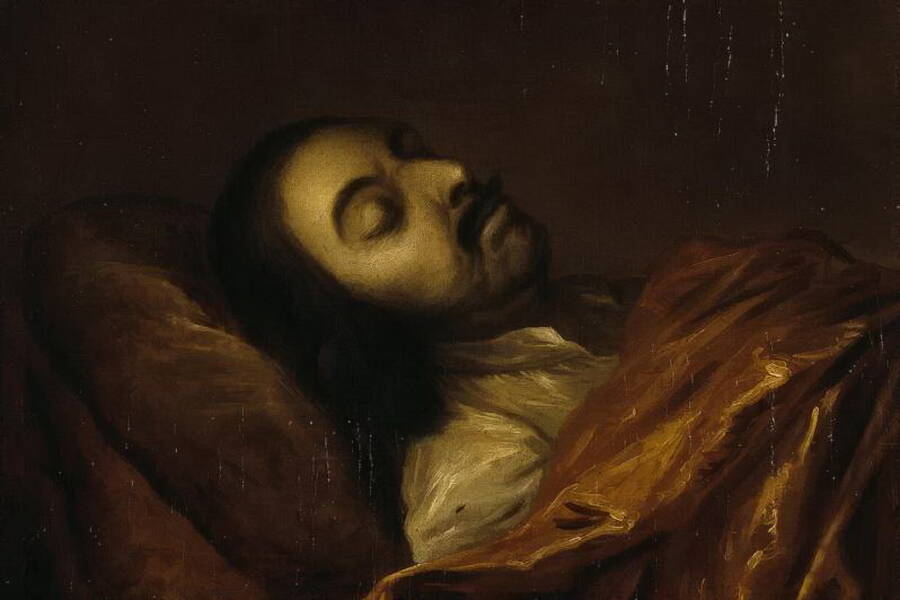
According to Peter's law on succession to the throne, the successor must be chosen solely by the will of the monarch. Ironically, before he died, the Emperor had no time to designate a successor. Catherine I ascended to the throne by the decision of the Senate.
Results of Peter's Rule
The reforms and conquests of Peter the Great made Russia one of the leading military and industrial powers of Europe. Peter created a new cultural environment in Russia, changed the economy, state structure, everyday life, food, fashion and even leisure. Saint Petersburg, the new luxurious capital of the empire, became the symbol of Peter's transformation.
The internal politics of Peter the Great were not liked by everyone: the Emperor was popularly nicknamed the "Tsar-Antichrist" because of cruel and violent transformations and a sharp break with all national traditions (including the ban on wearing Russian clothes and growing beards).
Not all of Peter's transformations were continued by his successors, but the Emperor's activities set the vector of Russia's development until the very end of the 18th century.